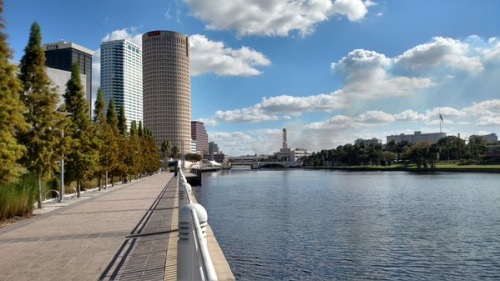
Workin’ the Waterfronts
By Titus Seilheimer
I’m a fish guy. I’ve spent a lot of years studying fish. You can touch fish, eat fish, and people care about fish. But even within the world fish people, I’m not that hardcore, because most of my work has been looking at habitat (I’d give that title to the sport fish researchers/managers). I’m telling you this to set the stage for the conference I’m at now. It’s where the fish meet the land, but there are a lot of other things too.
I’m at the 4th National Working Waterfronts and Waterways Symposium. This gathering draws attendees from all over the country (24 states) and even one Canadian province. Many Sea Grant programs are active in working waterfronts, so it is also a great opportunity to network from colleagues from other programs. Working waterfronts sit at a nexus of the Sea Grant focus areas, which are areas of “critical importance to the health and vitality of the nation’s coastal resources and communities”: healthy coastal ecosystems, sustainable fisheries and aquaculture, resilient communities and economies, and workforce development.

Protecting our working waterfronts is important because some industries, like commercial fishing, need to access waterfront property. As waterfront property values have increased, pressure on these water-dependent industries have also increased as they struggle to hold on to access. Fortunately there are tools available that will help work within these areas from the National Working Waterfront Network.
I attended a session on aquaculture today. This made me a little jealous of the shellfish that can be grown in marine environments. Quick to grow and low on the food chain, these species may have great future potential. Although the Great Lakes can produce a lot of Quagga mussels, there isn’t a market for them. As we know from the Eat Wisconsin Fish program, we import a lot of seafood. Aquaculture is a very efficient way to produce protein, and it is likely to grow in the future.
I also learned about some great work going on in Oregon that will help connect consumers with seafood and the working waterfront. Dive into these videos on the waterfront and keep an eye open for two apps that will lead you through the Coos Bay/Charleston waterfront and help you find seafood. Maybe we will be able to adapt the app platforms to Eat Wisconsin Fish someday.
